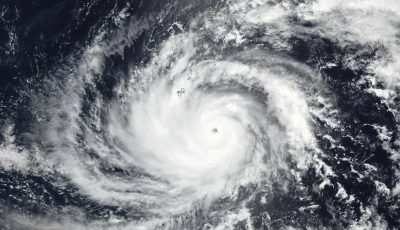When are the Americans coming?
The interrogation, shaped as an outcry for freedom in the post-1945 period, encompasses a horizon of high, albeit immaterialized, expectations, turned subsequently into a depository of unfulfilled sentiments, passed from generation to generation in the form of some actions motivated by hope and/or frustration.
We have identified two specific regional dimensions—the Atlantic one, present in some U.S. military allied countries in Eastern Europe, and the Pacific one, detected by anthropologists at some populations in Oceania—each of them with strategic implications.
The Atlantic Dimension
In Eastern Europe, the expectations for an American arrival were taking shapes since the Allied invasion of Normandy, on June 6, 1944. But in Spring 1945, when the American and Russian armies were advancing toward Berlin from opposite directions, several Eastern European nations got caught in between the games of interests of these two main actors. This was due to a previous U.S.-Soviet Union agreement establishing a certain demarcation line in the front zone.
In the Czech Republic, the anti-German resistance members of the Prague Uprising (May 5 to May 8, 1945) could not persuade the U.S. Army to intervene, although their units were just 12 miles away and able to capture the city in several hours. American politicians and generals (like Omar Bradley) – fearing they would anger their Soviet ally—forced their military to play a passive role, and did not allow general George Patton to take over Prague, although he was wanted and expected there by the majority of the population (except for the pro-Soviet sympathizers). https://en.wikipedia.org/wiki/Prague_uprising
In Romania (initially an Axis member), after the country switched sides to the Allies on August 23, 1944, the population’s unfulfilled expectations—to be liberated by American troops from both Nazi Germany and Communist Russia—had a more dramatic turn of events. Anti-communist guerrilla fighters, led by former Royal army officers, were able to operate somewhat effectively in the Carpathian mountains against the Red Army occupied country, throughout the entire late-1940s to early-1960s period. http://www.cinemagia.ro/trailer/undeva-in-est-930/ But even after that, mixed feelings of hope and frustration continued to persist until after the fall of communism, in 1989. https://www.youtube.com/watch?v=gJ6olTZs650 The “non-arrival of Americans”— both during the post-1945 and post-1989 periods – has been a theme generously exploited by the local movie industry, and rewarded with international film festival awards.
The Pacific Dimension
For the nations of Oceania (and especially in Melanesia), https://upload.wikimedia.org/wikipedia/commons/9/93/Pacific_Culture_Areas.jpg these unfulfilled expectations have partly surfaced in the form of cargo cults. https://en.wikipedia.org/wiki/Cargo_cult Initially, cargo cults appeared as a synthesis of local and foreign elements, involving help from the ancestors and abundance of goods, but later on – especially during and post-World War 2 era – Pacific cults were associated with (mostly) the U.S. military equipment and supplies airdropped to troops and islanders, that drastically changed the lifestyle of the latter. After 1945, the military abandoned the airbases and stopped dropping cargos, causing the local leaders to develop cults promising deliverance of goods as gifts from their ancestors or other sources. Ever since, the sentiment of nostalgia has been extremely intense, making the cult members to mimic some U.S. soldiers’ routines, like military parades, drills and landing signals. http://googlesightseeing.com/2008/02/john-frum-day/
Cargo cults or so-called cults—like “John Frum (America)” https://en.wikipedia.org/wiki/John_Frum or “Johnson cult” https://en.wikipedia.org/wiki/Johnson_cult—are still active in countries like Fiji, Vanuatu, and Papua New Guinea.
Strategic implications
Obviously, all these manifestations of sympathy for American values and military personnel must be commended and appreciated for their loyalty and durability throughout time. Apparently, pro-American attitudes in Eastern Europe have been a constant in the area since the early 1920s. Therefore, as we emphasized in previous occasions, http://www.americanthinker.com/articles/2016/05/the_american_idiocracy_and_eastern_europe.html
These Eastern front nations need to be encouraged and rewarded accordingly—before they do not turn again to bitter frustrations—by engaging them more actively against the current Russian expansionism toward West and the Atlantic.
On the other hand, since populations in Oceania have been exhibiting constant pro-American attitudes, basically since the 1898 Spanish-American War, http://puertoricomonitor.blogspot.com/2016/05/statehood-for-us-territories-historical.html the next American administration should envision them, as we proposed before,http://www.caribbeannewsnow.com/oped.php?news_id=30444&start=0&category_id=6 into a renewed construction (particularly the current U.S. territories and the COFA nations) geared to neutralize the current Chinese (and Russian) expansion toward the East and the Pacific.



























